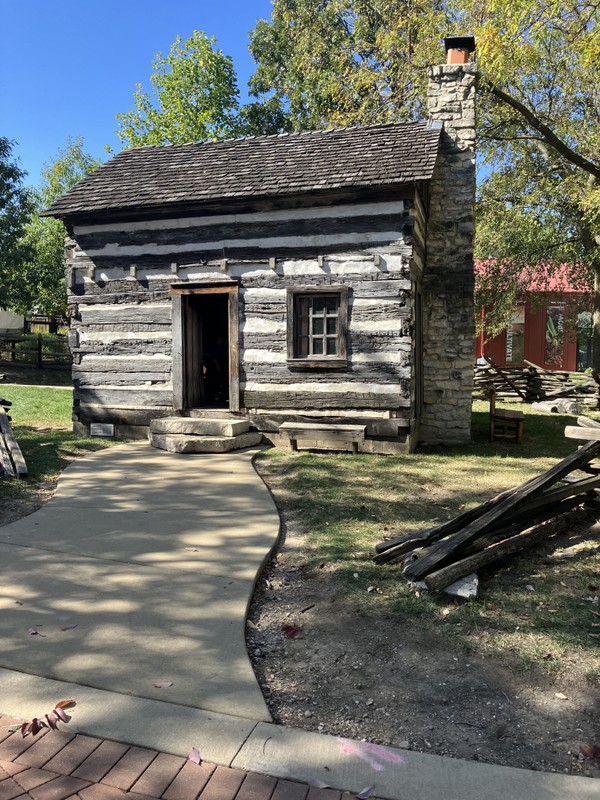Log House
Introduction
Author-Uploaded Audio
Listen to a narration of this entry's description by Jessica Toran.
Text-to-speech Audio
In 1831, Captain Joseph Naper, a former captain on the Great Lakes, led a party of 50 to 60 settlers from Ashtabula, Ohio, to a parcel of lush prairieland along the DuPage River, land that would become known as Naper’s Settlement. These first settlers lived in crowded log homes like this one. Swedish and Finnish colonists who settled the Delaware Valley in Pennsylvania brought the style to America in the 1630s. Settlers built log homes of readily available natural materials like wood, stone, and mud. To build a log home of this size (18 feet by 16 feet), a settler would need to cut down seventy to eighty logs of equal size. Log homes could be built of logs that were either hewn, cut and shaped, or unhewn, left whole. After cutting, builders made notches at the ends of the logs. Notches held logs in place and eliminated the need for nails or pegs. Builders filled the gaps between logs with clay or mud. This process, known as chinking, weatherproofed the exterior walls. Many settlers built their log cabins with holes in the roof to vent smoke, greased paper windows, and a dirt floor. A settler might turn his log cabin into a log house by adding a hinged door, glass windows, a plank floor, and a fireplace with a chimney. The finished product was a log home any early settler could be proud of. Log homes were never intended to be permanent structures. Settlers would live in the simple log home for only a few years until they built a larger frame house like those they lived in back East. Living quarters were tight in log cabins, with settler households averaging six people. Life inside the log home revolved around the fireplace, which was the main source of heat, light, and fuel for cooking. No day passed when the fireplace went unused—even in the summertime. Life in a log house was hard work and little play. Every member of a frontier household, including children, was responsible for daily chores essential to the family’s survival. Men and older boys cleared and cultivated fields, chopped firewood, and tended livestock. Women were responsible for cooking, cleaning, sewing, laundering, and related tasks. Children carried water, gathered fallen branches for kindling, and minded their younger siblings. The log house at Naper Settlement is the only building on the museum grounds which is not originally from this area. This log house was brought to Naper Settlement in 1978 from Jonesboro, Illinois.
Images

Backstory and Context
Text-to-speech Audio
Found across the country, log homes provided settlers the ability to quickly build a temporary shelter in order to get started on planting crops or other work immediately. Using construction techniques from Northern and Eastern Europe, settlers passed this style down throughout generations and across communities. In order to build a sturdy home, settlers had to have a strong base knowledge of their environment and engineering. Trees had to be sturdy, rot resistant, and large enough to build a livable space. Before stacking, the logs might be stripped of bark or hewed, meaning cut to have flat sides. To stack them, people could use different techniques to connect the logs to one another such as saddle notching, steeple notching, step and lock notching, and corner posts. No heavy machines were around to put the logs into place, they had to be placed by hand, one by one. In between each log would be chinking and daubing. Chinking is wood or stone slabs with moss or clay. Daubing is the outer layer that looks like dried mortar and consists of sand, clay, and a lime mixture. You can see this chinking and daubing on the log house here at Naper Settlement. Using this engineering knowledge, settlers were able to build sturdy homes in a few days.
